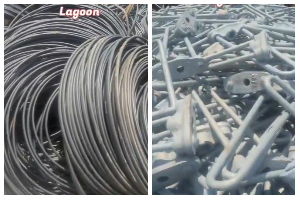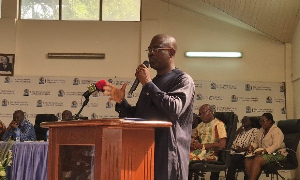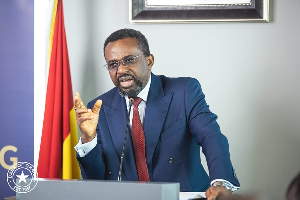at this stage
We all woke up last Thursday morning to read about the fire that engulfed the Ministry of Foreign Affairs building. This is an unfortunate event but one could say that the warning signs have been there for years. Even in recent months, the fires at Kumasi Central market, Kantamanto market in Accra and the Ministry of Information served as enough warning signs of things to come. Only this June, the Ghana National Fire Service (GNFS) was calling for funds to upgrade its equipment but this fell on deaf ears. What was said then has turned out to be prophetic (Link).
I wrote this article to register my concern about the approach the government has adopted to investigate the causes of this fire. The NDC government came to power vowing to make government lean. At the last count they have set up over 7 high profile committees and commissions of enquiry who are adding to the size of government. Whilst the setting up of some of these committees may be justified, others are duplicating work that could have been carried out by statutory state agencies whose staff is drawing salaries from the public purse.
The other disturbing aspect of these committees is that they usually turn out to be ‘political’ committees without either the necessary competency or resources to fully delve into what they have been tasked to do. It is in this vein that I am registering my disappointment at the setting up of yet another ‘political’ committee of enquiry to investigate the fire at the Ghana Ministry of Foreign Affairs. It does not even help matters when the President laced his comments about the fire with political innuendoes by stating that he was not interested in finding scapegoats or witch-hunting.
To learn any lasting lessons and to prevent future occurrences, time should be given for the right people with the right knowledge and skills to investigate this event. Given only 6 weeks to present their findings, a committee containing ‘politicos’ with no knowledge about how building fires occur, how they spread and how they are fought, can only come out with recommendations for further investigations. Investigations into such an event, which has made the conspiracy theorists so busy, should have begun with a scientific investigation. I think that even if a ‘political’ committee of enquiry is required at all, it is pre-mature to set one up at this early stage.
What should have been done was to plan a systematic stage-wise investigation starting with scientifically finding the causes of the fire for the public to know whether or not foul play was involved. Following this, a technical committee should then be set up to assess the adequacy of the fire safety provisions in the design and management of the building. It is only after these investigations that a committee of enquiry, of the kind established by the President, can sit to consider the lessons to be learnt from this event and to recommend actions to government to minimise any future occurrences. I believe it is not too late for the government to set up other parallel investigations. I have hurriedly put together some suggestions below which I hope could be of some benefit.
Stage 1: Scientific investigation into the causes of the fire
1. If not already done, the police should immediately throw a cordon around the building to preserve evidence. The extent of the cordon should take into consideration the collapse radius of the building. If, perchance, the structural frame has been weakened by the fire, the building could collapse under wind action and measures should immediately be instituted to protect the public from such a potential hazard.
2. The services of structural engineers should be engaged to assess the stability and safety of the burnt-out building and to advise fire officers if it is safe to enter. If the structure is found to be unstable (especially local stability of floor slabs which could now be sagging and from which concrete might have spalled), temporary stability measures should be installed to allow access into the building by fire officers to carry out forensic investigations.
3. Once the building is adjudged safe to enter, fire officers should enter to carry out investigations assisted by the Police. They should be aiming to find out, among others:
a. the seat of the fire, the ignition source and the possible causes of the ignition;
b. the fuel that sustained the fire and the fire load on the building (i.e. anything flammable that was kept in the building),
c. how the fire was able to spread from the originating compartment to other parts of the building (i.e. adjoining rooms and other floors);
d. Whether this was the making of arsonists. If arson is suspected, the police should then take charge of the investigations from hereon to apprehend the perpetrator(s).
This first stage of investigations should result in a preliminary report to government summarising all the above, with particular regard to the causes of the fire and what contributed to its severity.
Whiles the stage 1 investigations are ongoing, government should direct that fire safety audits be carried out on all government facilities by the Ghana National Fire Service. The audit for each building should consider: the potential for fire outbreak; the severity of any potential fire; and who/what would be affected by the fire and to what extent. The audit should also assess whether government buildings are being used safely; what fire and smoke alarms are in place; what evacuation measures are in place and whether they are adequate; and the state of repair of any fire fighting equipment on the buildings. Are there any escape routes from such buildings and are they sufficiently protected to allow occupants to escape from the building in the event of a fire outbreak? The findings from this audit should result in an interim advice being sent to all managers of government buildings on how to protect occupants and how to store and protect important national documents. I might add that privately-owned buildings could also follow such interim advice.
Stage 2: Detailed technical investigations
The second stage of investigations should begin once it is deemed that the stage 1 investigations would not be interfered with and the Police and Fire Service are satisfied that they have collected all relevant evidence. This stage of investigations should be really a matter for the technical people and should involve structural engineers, architects, building services engineers, fire engineers and officers from the Ghana National Fire Service. The aim of these investigations should be to
1. assess the adequacy of the fire safety provisions in the design of the building in terms of its performance in the fire;
2. assess the integrity, strength and insulation properties of the non-structural components of the building such as the building envelope and compartment boundaries;
3. assess the adequacy of fire safety management on the building such as number and location of fire and smoke alarms; number and location of fire extinguishers; location and number of hydrants; compartmentalisation and zoning of different occupancies or uses;
The technical investigations should also be assessing whether the burnt-out building could be repaired for re-use, and if so, what these repairs and their extent would be. This group should submit a technical report that addresses all the issues raised above. This report could form the basis for ensuring fire safety in new constructions and for fire upgrades in existing buildings.
Stage 3: Lessons to be learnt
This is the stage where, in my opinion, a committee comprising of political and technical membership is required. This is the lesson-learning stage with the reports from the previous two stages as important inputs. In addition, the committee, at their hearings, should invite contributions from stakeholder groups such as: the Fire Service; the Police; Construction companies; the building and engineering professions; relevant departments of our universities; and insurance companies who may have to underwrite some of the losses from a fire event. Among the recommendations from this committee should be how the Ghana National Fire Service should be equipped and trained to deal with fires of this kind in future. However, more importantly, the committee’s work should result in statutory recommendations to ensure fire safety on buildings in Ghana. In arriving at these they should be considering the following, in addition to other pertinent questions:
1. What intervention was made by the fire brigade in this particular incident and what hampered their work (in terms of response time, personnel training, equipment, local facilities, access to the building, access to the origin of the fire, etc.)?
2. What provisions should be made in the design of buildings in Ghana to ensure fire safety?
3. What materials should be specified in compartment boundaries and building envelopes to prevent the spread of flames and smoke?
4. What measures should be taken on different buildings types and different occupancy zones in buildings to warn of fire, to suppress fire growth and to minimise migration of smoke?
5. How should we use manage buildings in Ghana to ensure fire safety?
6. What evacuation strategies should be in place on buildings to protect life during a fire outbreak?
7. What training should be given to individuals and occupants of buildings to ensure fire safety in buildings?
8. How and where do we safely store important national documents and what backups are required?
I will recommend the above stage-wise investigations to the committee of enquiry and relevant state departments. If something akin to these is followed, the nation will learn from this event. It will also ensure that politics do not get in the way of an issue that requires serious attention.
We have had fires in markets, private buildings and the Fire Service had been calling for equipment but it took a fire at the Ministry of Foreign Affairs for government to react. This fire, even though representing a setback, if the right lessons are properly extracted and acted upon, it should ensure the welfare of Ghanaian building users and occupants for generations to come.
Dr. Frank Yaw Ohemeng (Manchester, UK)
Opinions of Wednesday, 28 October 2009
Columnist: Ohemeng, Frank Yaw














